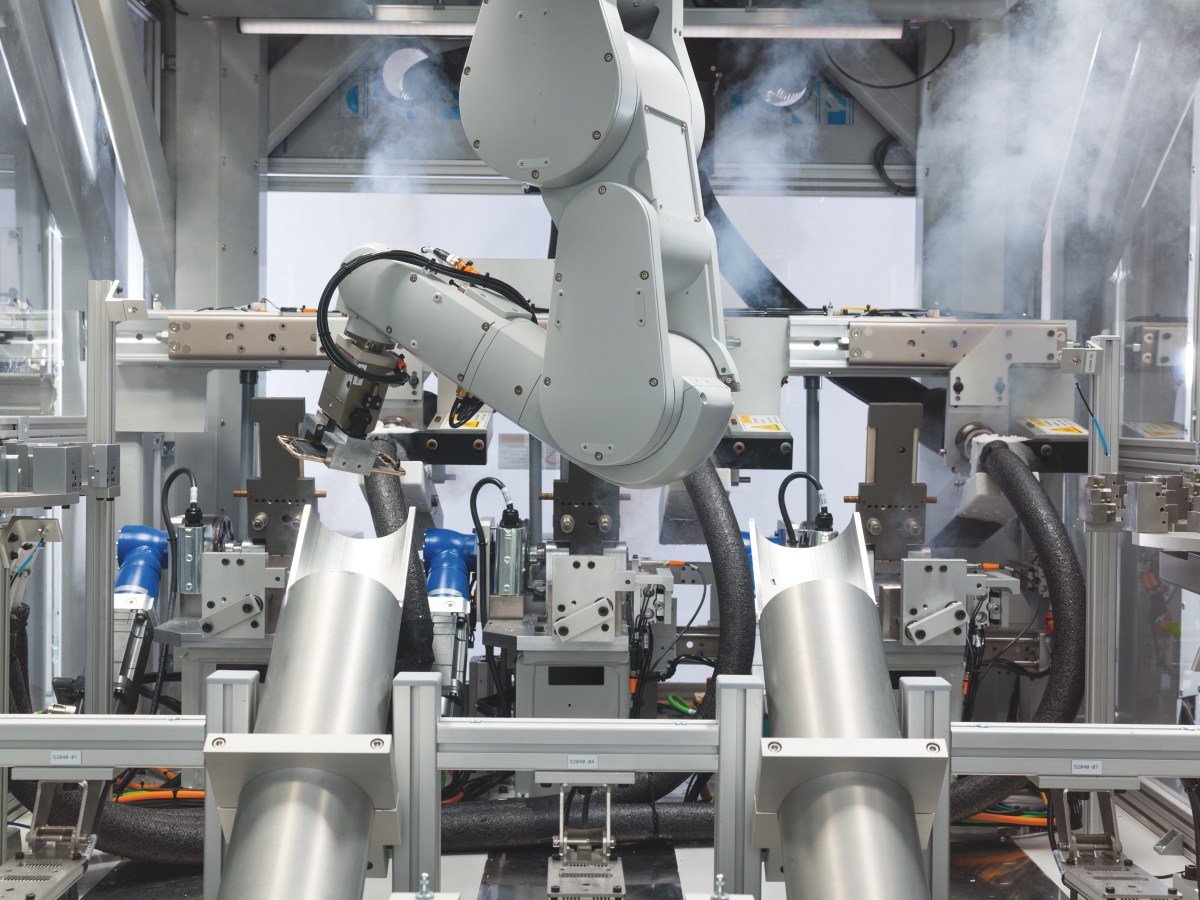For every success story in the tech world, there are countless projects that crash and burn upon the harsh reality of implementation. Apple’s ambitious goals of creating an electric vehicle are just one example of a project that failed despite all odds.
The fate of Apple’s Vision Pro is still up in the air, but one thing is clear: the company is not afraid to keep pushing the boundaries, even in the face of failure. After the disappointing setback with their car, rumors have emerged that Apple is now turning their attention to a notoriously difficult field: home robots.
The category of home robots is both unique and incredibly challenging for a number of reasons. One key factor that sets it apart is the fact that there has only been one real success story: the robot vacuum. It has been 22 years since the first Roomba was introduced to the market, and since then, the industry (including the creator, iRobot) has been chasing that same level of success.
Despite numerous attempts, iRobot has not yet been able to replicate their initial success. They have introduced various new products, such as gutter cleaners, pool cleaners, lawn mowers, and even a Roomba specifically designed for garage floors. However, in the end, the company has found the most success by focusing its efforts once again on their robot vacuum.
The robot vacuum’s success can be attributed to its focused functionality: to repetitively perform a single and in-demand task to the best of its ability. Even today, vacuums remain the main battlefield in the competition of home robots. Take, for example, Matic, a well-funded startup in the Bay Area. The former Google/Nest engineers who created the company strongly believe that the next breakthrough in home technology will be built upon the foundation of robot vacuums. They argue that iRobot has painted themselves into a corner with their puck-like design.
The original Roombas were not built with the advanced sensing and mapping capabilities that exist today. Matic proposes that by simply making the robot taller, its vantage point would be greatly improved. This design philosophy is also evident in Amazon’s Astro home robot, which features a periscope camera.
The reality is that the functionality of home robots is greatly limited by their form factor. The circular designs that are common among robot vacuums are not ideal for tasks beyond basic cleaning. To effectively perform more complex tasks in a home setting, the hardware needs to become more advanced. Mobile manipulators, or robots with the ability to move and manipulate objects, are a prime example. If you need help with something, it’s best to start with a hand.
However, mobile manipulators are no easy feat. Even in the world of industrial robotics, they have yet to be fully perfected. While large, stationary robot arms are commonly used in manufacturing, and wheeled autonomous mobile robots (AMRs) like Locus and Kiva are popular in warehouses, there is still a significant gap in the middle ground between the two. This is why the human element remains crucial in those environments. Solving this problem will take time, but it’s likely that it will happen first in the higher-end industrial machines before making its way into more affordable home robots (after all, corporations generally have deeper pockets than individuals).
This is also why many experts advocate for a humanoid form factor in the workplace. After all, humans possess the ultimate mobile manipulation capabilities. But that is a topic for another time.
In theory, mobile manipulation is not impossible for home robots. Hello Robot’s Stretch is a prime example of this. Instead of a humanoid design, it resembles a Roomba with a pole mounted in the center. This houses both an imaging system and an arm that can move up and down to grasp objects of different heights. Of course, some tasks can be better accomplished with both arms, which is why there has been a trend towards backward-engineering humanoid designs in robotics.
In its current state, Stretch is too expensive for most consumers, with a price tag of $24,950. This is likely why the company is selling it as a development platform. Similarly, Matic sees their own robot as a way to develop and expand into other household tasks beyond vacuuming.
Another challenge for home robots is navigation. Compared to warehouses and factories, homes are much more diverse and unstructured environments. There is a wide range of layouts and lighting, and humans are constantly moving objects and dropping things on the floor.
The world of self-driving vehicles has faced similar obstacles. However, the key difference between autonomous cars on the highway and home robots is the potential consequences of errors. While a home robot may knock something off a shelf, causing minor damage, a self-driving car accident could have much more severe consequences. As a result, self-driving technology is held to a higher standard of safety compared to human drivers.
Despite the slower adoption of self-driving technology due to safety concerns, many developments in the field have inadvertently propelled the robotics revolution forward. For instance, autonomous vehicles are now being used on farms and sidewalks.
This may be why many people view home robots as the next big thing, as reported by Bloomberg’s sources. Apple has undoubtedly invested a significant amount of resources into driving technologies. If these technologies can be repurposed for another project, then perhaps it won’t all be for nothing.
While reports state that Apple has not yet made a firm decision on specializing in either a robotic smart screen or a mobile robot, they have already placed key executives from their Home division, Matt Costello and Brian Lynch, on the hardware team. Additionally, SVP of Machine Learning and AI Strategy, John Giannandrea, is reportedly involved on the AI side of things.
Given their existing efforts in the home, it’s possible that Apple is working on their own version of Amazon’s Astro. However, for now, the project remains as more of a cautionary tale, hampered by high costs and a lack of useful features. The system also served as a portal for Amazon’s Alexa, and with the decline in popularity of home assistants, it is uncertain if it will catch on.
While Apple does have some experience in robotics, it pales in comparison to Amazon’s extensive industrial robotics division. Apple has previously been involved with the creation of robot arms, such as Daisy, which salvages key metals from discarded iPhones. However, creating a home robot is a much larger leap from their existing capabilities.
Perhaps the company will take a similar approach to their Vision Pro project, which heavily relies on contributions from third-party developers. This would require an extremely versatile hardware platform, likely making it too expensive for most consumers and mirroring the Vision Pro’s price tag of $3,500.








